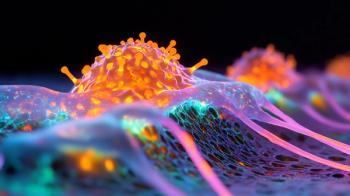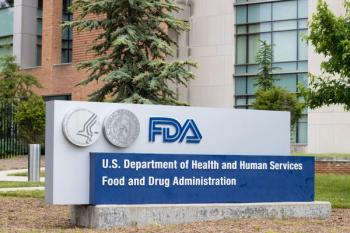
- MHE November 2025
- Volume 35
- Issue 11
AI Turns 50-Year-Old Cancer-Risk Theory Into Reality
Key Takeaways
- AI's role in cancer detection has evolved from Wolfe's 1970s mammographic pattern research to modern predictive models like Mirai and CHIEF.
- Interreader variability and regulatory challenges persist, despite AI's potential to enhance diagnostic accuracy and consistency.
Can artificial intelligence reliably spot cancer risk earlier and more reliably than the human-based version?
If the idea of using artificial intelligence (AI) to help identify which patients will develop cancer and which will not seems a bit out there, the fizz of today’s AI hope bordering on hype, think again. It was hatched almost 50 years ago.
“If we go back to the 1970s, John Wolfe was a radiologist who said, ‘I'm paying attention to the mammograms in my patients that develop breast cancer, and they seem to look really different,’” says Connie Lehman, M.D., Ph.D., the founder of Clairity Inc.
Wolfe was a Michigan radiologist who wrote a
Lehman recalls that she became excited about Wolfe’s research as a resident back in the 1990s.
“And I shared it with my professors, who said John Wolfe was crazy,” she recalls. The point of the mammogram, they told her, was to look for cancer. Period. Focus on the masses, the calcifications, the distortions. That's what we're looking for, the professors said.
Lehman wasn’t deterred. She and others believed computers could become an essential tool for radiologists. In 1998, the FDA got on board with the idea, approving the first
Yet even as regulators began to embrace computer-aided radiology, Lehman and colleagues discovered that one key problem remained. The availability of computers did not eliminate interreader variability, that is, the natural tendency for individual radiologists to read images differently.
“It also turns out that human variation is present in how good they are at knowing to pay attention to a computer flag of a suspicious area or to ignore a computer flag of a suspicious area,” she says.
In other words, even if the computers did an excellent job at identifying suspicious anomalies, the humans looking at what the computers spotted paid varying levels of attention to the findings. Maybe computer-aided tools for cancer diagnosis had notional pop and sizzle, but they weren’t making much headway in entering everyday, clinical reality.
Lehman says that began to change 10 years ago. In 2015, she met Regina Barzilay, Ph.D., a charismatic Massachusetts Institute of Technology computer scientist who is on Time’s list of the 100 most influential people in shaping the future of AI. Barzilay had become an outspoken advocate for the use of AI in cancer detection following her own battle with breast cancer. Lehman and Barzilay began working together to develop models that could use mammogram images to predict breast cancer risk, resulting in an open-source, research-only model called Mirai.
In 2020, Lehman founded Clairity, whose lead product, Clairity Breast, uses mammograms to provide patients with an individualized five-year risk score (Barzilay is not directly involved in the company). Patients with a higher risk of developing breast cancer can then be referred for risk-reduction services, such as additional screening or early treatment. In June, the FDA granted the product de novo authorization, paving the way for its deployment throughout the U.S.
From a flicker to a fire
If the idea of using AI for cancer detection started as a flicker, it is becoming something closer to a bonfire. Dozens of cancer-focused AI start-ups have launched in recent years from both the healthcare and technology sectors. Yet Lehman says it’s important for would-be healthcare technology companies to understand the unique evidentiary and regulatory hurdles in the health sector.
“People who want to get into this are going to have to be really serious about it,” she says. “There's going to be easier ways to develop an AI model and get it out there for someone to use than this particular domain.”
Kun-Hsing Yu, M.D., Ph.D., of Harvard Medical School, understands the challenge. He worked with colleagues to develop the
Like Lehman, Yu says he was disturbed by research showing major interrater variability among pathologists. Given the pathologists’ central role in confirmatory diagnosis of cancer types, Yu says there is a clear need to leverage AI tools to boost accuracy and consistency.
The reason Yu likens CHIEF to ChatGPT is because it is designed to tackle a range of different types of tasks. The idea behind ChatGPT is that if you could train a model on a wide variety of widely available data, it would then be able to repurpose that data toward a wide variety of ends, such as answering questions, generating text or planning a trip itinerary.
“So our research idea is, can we use similar ideas to train a large model with a large variety of pathology samples and later tailor this model for specific use cases?” he says. “And we were fortunate that the preliminary results were very promising.”
Those preliminary results led to enhancements that have so far been validated in more than two dozen independent cohorts. Yu says their model surprised them with its capabilities. For instance, he notes that in many cancer types, treatment decisions are based upon a patient’s genetic profile, which can be used to identify markers susceptible to particular therapies. Currently, that profiling requires additional steps, such as genomic sequencing. Yet CHIEF was able to profile patients using only hematoxylin and eosin-stained images commonly used in pathology. “These conventional samples were only used in a clinical practice for standard pathology diagnosis,” he says. “There was not a lot of literature showing that we can actually predict genomic variations by just looking at the same medical image.”
Winning over payers
Clinicians and provider organizations may be ready to incorporate AI into cancer diagnosis and care. It’s another thing for payers to loosen their grip on their purse strings.
Jeff Luber, J.D., MBA, who joined Clairity as chief executive in November, says it will take time to overcome that challenge. “I've long lamented, as others have as well, the long delay between FDA clearance and when traditional reimbursement starts,” he says. “Because here you have one agency saying this product is deemed safe and effective, and yet the wheels of reimbursement grind so slowly.”
Luber says he has had encouraging conversations with the CMS, although he concedes that does not necessarily mean the agency will move quickly to cover their services. In the meantime, he says health systems that offer Clairity Breast will likely use a variety of models to pay for the service. He adds that they are working with a wide variety of healthcare providers and payment models to ensure their product is not merely a luxury for those who can afford to self-pay. Luber says Clairity has a strong value proposition. “We're actually not going to replace what's going on,” he says. “We're going to augment it and make what's going on more efficient.”
Luber says Clairity can transform a mammogram image from a snapshot of a moment in time into a dynamic risk tool. Instead of aiming for early diagnosis, he says, “Let’s see if we can see it coming.”
Yu says the shopworn trope that new technology will replace humans is likely false, at least when it comes to pathologists and radiologists.
“Regardless of how advanced these AI systems are, there's still a place for AI-human cooperation,” he says. “We cannot completely remove humans from clinical practice.”
Yu thinks the more likely scenario is that human clinicians who are fluent in using AI tools will replace humans who are not.
Educating patients
AI fluency, however, may need to extend beyond medical professionals. Lehman and Luber say their technology will also require something of a mindset shift on the part of patients. They say a key part of rolling out their technology will be helping patients to better understand what their risk level means and what can be done about it.
Lehman posited a case in which a woman is told her five-year risk of breast cancer is 4%. To the patient, that might seem like great news — there’s a 96% chance they don’t develop breast cancer in the near term.
“But that's actually a very high risk of breast cancer,” Lehman says.
High enough, she says, to warrant a more aggressive screening strategy.
Luber says the key will be not just educating patients but also linking that education with empowerment.
“Ignorance is not bliss in this situation,” he says. “This really is a situation where, if you're at an elevated risk, good news: There's something you can do about it.”
Excerpt from John Wolfe’s seminal 1976 paper titled “Risk for Breast Cancer Determined by Mammographic Parenchymal Pattern”
"This author has been interested for some time in the varied parenchymal patterns of the breast and has made some observations of their occurrence in previous articles. It has been shown that a prominent duct pattern appears to have a definite relationship to cancer of the breast. It was reasoned that if a prominent duct pattern was seen frequently in women with breast cancer, then it might be likely that the prominent duct pattern preceded the development of breast cancer. It is not known what its simulus [sic] may be, but perhaps it is similar to that which produces the change in the epithelium of the breast which eventually goes on to carcinoma."
Articles in this issue
about 1 month ago
Selling Directabout 1 month ago
A Conversation With Lucille Accetta, RPh, M.P.H., MBANewsletter
Get the latest industry news, event updates, and more from Managed healthcare Executive.




















































